One More Attempt to Understand Aliens vs. Hurricanes
I am completely unsatisfied with the responses in the comments of my previous post. Let’s try this again. I’m going to use numbers. Please answer me with respect to the numerical examples provided. If you want to step outside my thought experiment and tell me why it’s unfair, missing the point, etc. etc., that’s fine, but let’s all get settled on what the answer is, in the numerical thought experiment below.
SCENARIO A: The United States has 8% unemployment and 1000 units of capital. Astronomers report that Martians are en route with an invasion force. The government spends $350 billion to create 350 surface-to-flying-saucer laser turrets. There is no crowding out; it just so happens that the 350 turrets can be created purely from idle resources. Unemployment drops to 2.5%. In April 2013, the astronomers say, “April Fools!” and we dump the useless 350 turrets into the ocean. So all we have in terms of physical wealth is the original 1000 units of capital. But we now have full employment and actual GDP is at potential GDP; the recession is over.
SCENARIO B: The United States has 8% unemployment and 1000 units of capital. A hurricane smashes the Eastern coast and causes $350 billion of damage, reducing the U.S. down to 650 units of capital, but fortunately no human is physically injured. The government spends $350 billion to replace the destroyed 350 units of capital. There is no crowding out; it just so happens that the 350 units of capital can be created purely from idle resources. Unemployment drops to 2.5%. In April 2013, the reconstruction is complete. Our physical wealth has been restored to the original 1000 units of capital. But we now have full employment and actual GDP is at potential GDP; the recession is over.
SCENARIO C: The United States has 8% unemployment and 1000 units of capital. Mitt Romney becomes president and hires Bob Murphy as his advisor, because of the Austrian views “sweeping the GOP.” The Murphy plan foolishly chases that saucy minx, the confidence fairy, for 8 straight years to no avail, and the country stays mired in recession the whole time.
Now: Does anyone want to tell me that it would make sense for a person to say Scenario A is much better than Scenario C, but that Scenario B is clearly inferior to Scenario C?
“Hurricanes Are Nature’s Keynesianism”
I didn’t choose that title for my latest article at The American Conservative–it’s a bit too provocative for my tastes–but I don’t think it’s out of line. I don’t see why our Keynesian friends here (and even in the comments of my article) bristle so much at linking the two. Look at this earlier piece criticizing Bastiat from Matt Yglesias (HT2 Bob Roddis). Yglesias writes:
[YGLESIAS WRITING:] Similarly, Bastiat’s alleged broken windows fallacy involves simply assuming that there’s no such thing as genuinely idle resources or an “output gap.” In that context, yes, it’s a vibrant intuitive depiction of crowding out. But this doesn’t counter any Keynesian or monetarist points about the viability of stimulus during a recession induced by nominal shocks, it involves assuming that no such recessions can occur even though they plainly do.
So would it make everyone feel better if, from now on, I said, “Only Keynesians and monetarists think that natural disasters can be good for the economy?”
(As an aside, I had forgotten just how much I disliked that Yglesias piece. He misspells Bastiat’s first name–and Caplan’s too, but not a big deal–and actually thinks “The Petition of the Candlemakers” is a satire about rent-seeking [!], that may or may not be useful in our current understanding of rent seeking.)
Anyway, back to my article today at The American Conservative. Here’s the news you can use:
[MURPHY WRITING:] Now a sophisticated Keynesian economist might respond to my above arguments along the following lines: “Yes, generally speaking a natural disaster confers no economic benefit whatsoever. However, in the case of idle resources and high unemployment—such as we currently face—the artificial jolt to demand really does raise GDP, rather than simply changing the composition of what is produced. The extra people put to work repairing storm damage don’t simply come from other lines of production, because there was a giant pool of unemployed people on the eve of the storm.”
Even on its own terms, this proposition is debatable. The people unemployed across the country on the eve of the hurricane’s landfall were not perfectly equipped to repair damage on the Eastern seaboard. In other words, much of the labor, glass, wood, steel, rubber, and other resources used in the wake of Sandy will indeed come at the expense of other employments….
However, let us concede for the sake of argument that there is, say, $10 billion in total reconstruction spending, and that this money sucks only unemployed workers back into production; no other output suffers. Just for a specific example, suppose that the $10 billion ends up going to 1 million previously unemployed workers, who each earn $10,000 over a few months repairing the damage. Official GDP goes up, because (by assumption) the output on other items follows the same path it otherwise would have, and now in addition we have the “finished goods and services” of the new window panes, shingles, telephone lines, etc. being produced over the next few months. Can we say in this case that the storm “helped the economy”?
We might say this, if we take “the economy” to be the same thing as “official GDP,” but in so doing we have totally severed the connection between conventional metrics of economic health and actual human welfare. For in this hypothetical case, the boost to GDP would go hand-in-hand with a demonstrable reduction in aggregate economic well-being. In particular, the people spending the $10 billion would be out $10 billion. By construction in this example, their consumption and accumulation of other durable goods is the same, but they are also spending an extra $10 billion just to repair storm damage. So their savings is necessarily lower by $10 billion, and they have nothing to show for it.
In contrast, the previously unemployed workers are up by $10 billion. Yet it’s not a simple transfer or redistribution—these people had to work for a few months to earn that money, so they didn’t actually gain a full $10 billion, as if they had just been handed the money for free. Thus, to the extent that we want to engage in aggregate measures of human well-being, the only sensible conclusion is that “society” or “America” or “the economy” is poorer on net. To repeat, this is because one group of Americans (those suffering storm damage) are down $10 billion and have nothing new to show for it, while another group of Americans (the 1 million previously unemployed who now get hired to fix the damage) are up, but not the full $10 billion, because of the value of their forfeited leisure.
The “macro” case of an economy with idle resources, suddenly being jolted out of its rut by a hurricane, is analogous to a “micro” case of a man who was laid off, agonizing over what to do with himself. Should he go back to school, apply to work at fast food restaurants, start his own lawn-cutting business…? Then, in the midst of his indecision, he realizes his house is on fire! The man suddenly knows exactly what he needs to do with himself—he has to run to the kitchen and grab the fire extinguisher. Yet would anybody dare argue that the fire, notwithstanding the property damage to the house, at least solved the man’s problem of idle labor?
Incidentally, I may have gotten that “micro” analogy from Silas Barta; we were both thinking along the same lines, last time this issue arose, and it’s possible he crystallized it before I did.
Finally, Daniel Kuehn emailed that Morici guy, and Morici said that he doesn’t think a hurricane can make us wealthier. I know it sounds like I’m being stubborn, but if you care, look at my comment to Daniel on Morici’s response. It makes no sense to me; we must be using “wealth” in different ways, or he is using the relevant baseline to be, “What would society’s wealth be in the month after the hurricane, if instead of the storm we had had optimal fiscal and monetary policy?” But on a commonsense meaning of what it would mean for the storm to make us wealthier (not counting human tragedy), I don’t see how Morici gets around the conclusion that his position implies it. I’m being serious, if someone can explain to me what Morici means, I will be grateful; I genuinely don’t understand the sentences he sent to Daniel over email.
Did Matt Yglesias Just Refute Keynes and Krugman?
It used to be the case that after a natural disaster, we could expect the following:
1) Pundits and even some economists would say that despite the human tragedy, the silver lining was that the disaster would be “good for the economy.”
Then, due to the efforts of Henry Hazlitt, it used to be the case that after a natural disaster, we could expect:
1) Pundits claiming it was good for the economy.
2) Free-market economists saying this was the Broken Window Fallacy.
Now, it it is the case that after a natural disaster, we can expect:
1) Pundits claiming it was good for the economy.
2) Free-market economists saying this was the Broken Window Fallacy.
3) Keynesians saying, “No it is NOT!”
For an example of an economist who quite clearly is saying that the storm is bad on a personal, human level, but that it might actually leave us better off in material terms, see this guy. Now let’s be fair: He is not saying, “I am glad the hurricane happened,” or, “The people on the East Coast, all things considered, are better off.” But he quite clearly says that the storm will boost construction spending and that America will “emerge stronger and rebuild better.” So contrary to the claims of my favorite grad student blogger, this guy is not merely looking at flow variables like GDP, he is also talking about the physical structures being replaced such that we emerge “stronger” than before the storm. Unless he actually said, “Daniel Kuehn be quiet” I don’t see how this guy could be clearer.
Now a much more interesting and defensible analysis comes from Matt Yglesias, who writes:
But suppose that interest rates are zero [and planned saving still exceeds planned investment]. What happens then?
Well, then you’ve got a recession. The recession could be cured by unorthodox monetary policy or by fiscal policy measures, but it hasn’t been. So you’re left hoping that the marginal product of capital will increase, thus bringing savings and investment back into equilibrium. An exciting new technological discovery could make that happen. And so could a hurricane. If there are already a bunch of perfectly good cranes in town, then nobody wants to invest in new cranes, and the crane factory sits idle. But if a hurricane wrecks a bunch of cranes, then the marginal value of a new [crane] goes up, and people want to invest in new cranes.
Now before everyone starts screaming “broken windows fallacy,” take note: This is a terrible solution to unemployment. By reducing society’s stock of capital goods and consumer durables, the hurricane spurs new production into being. But it’s also making us poorer.
The point I want to make about this isn’t that hurricanes are “good for the economy.” The important point is that suffering through a downturn without adequate fiscal and monetary stimulus amounts to rebalancing the economy through a slow-motion hurricane. We will, eventually, return to full employment. But we’re getting there by allowing the per capita stock of capital goods (as it happens, mostly houses) and durables to deteriorate year after year. Eventually this will lead us to a rebalancing, but it’s a form of rebalancing via impoverishment. Stimulus is much better. [Bold added.]
OK so I have some questions for Matt Yglesias (or his fans):
1) Suppose the only two options are a laissez-faire slow grind, in which recovery takes years as more cranes and other equipment become obsolete, versus a hurricane in which all the cranes are destroyed in a day and so recovery occurs within a month. If this is indeed the choice, wouldn’t you favor the hurricane because it would get the pain over with? The workers would immediately be put back to work, and would be spared years of losing their skills. By assumption, the physical stock of wealth wouldn’t be lower in the hurricane scenario than in the slow-grind recovery scenario. It’s just that we would hit rock bottom and start recovering in 2012, rather than (say) 2016. So even on your own terms, isn’t a hurricane a blessing, if (say) Richard Fisher is setting Fed policy and John Cochrane is in charge of fiscal policy?
2) I think you are saying a hurricane is a really bad way to fix the recession because (say) we go from having 1000 cranes down to having only 900, then we put everyone back to work making a new 100 cranes so we end up back where we started, with only 1000 cranes. In other words, we made ourselves physically poorer, in order to give the workers and other idle resources a kick in the pants to replace that lost physical wealth and in the process cure the recession.
2a) But if I have that right, then you would surely agree that burying bottles of money in the ground for workers to dig up, wouldn’t actually be “good for the economy,” right? I mean, sure you’d have a bunch of workers scurrying around, and there would be no more idle resources, but the economy wouldn’t end up acquiring more physical wealth than it had in the original state of recession.
2b) Or, you could surely agree that it wouldn’t actually be “good for the economy” if we erroneously believed aliens were going to invade us, and so we produced a bunch of exotic weaponry that then turned out to be completely useless. In that case, just as with the hurricane “solution,” sure we would have stimulated all the idle resources back to employment, but society wouldn’t actually accumulate any tangible wealth to show for it.
3) Can I ask you, Mr. Yglesias, and any of your fans, a favor? If and when you address these questions, please do not explain that Keynes and Krugman actually favor stimulus spending on useful, productive things. Yes, I know that. But I had thought that in order to disentangle the various factors in the case for stimulus, they intentionally–as a thought experiment–argued that it would be better than nothing if the government spent money on things that were completely useless. So if you are right that rebuilding after a hurricane doesn’t actually “help the economy,” then it seems you must be saying they are wrong with these controversial examples. (And good for you, if so.)
4) Last point: If we can all agree that only a fool would use “real GDP in the United States” as the proper metric of evaluating the effects of the hurricane on the country, when clearly it is the welfare or utility of the actual people living in the United States, then it is crystal clear Paul Krugman was wrong to try to address the “does debt burden our grandchildren?” question by focusing on real GDP in 2100, rather than on the welfare or utility of the actual Americans living in 2100.
Notes on Arrow’s Impossibility Theorem
Someone ran across my CV and asked me if I could send anything I’d written on game theory. So I dug up my class notes (for an undergrad class at Hillsdale) on Kenneth Arrow’s famous “Impossibility Theorem” regarding social choice. I haven’t looked at these in 7 years, so I hope they’re right:
NOTES ON ARROW’S
IMPOSSIBILITY THEOREM
Economics 356
History of Economic Thought II
Spring 2005
Individual Preferences
Following the methodological revolution described in Hicks, by the 1940s most economists no longer believed in cardinal utility. At the very least, most economists considered it much safer to assume that people had merely ordinal preferences, rather than to take the stronger view that people actually received units of psychic happiness (“utils” or “wantabs”) from various goods and services.
Economists developed formal techniques to rigorously develop this line of thought. The first step is to define the set of all possible items to be valued. Depending on the context, this set consists of different types of things. At the most abstract level, it could be viewed as “the set of all possible universes.” In a much more specific example, it could merely refer to “the set of all possible pizza orders the class could phone in to Hungry Howie’s.”
Once we have defined the appropriate set, we then can talk about how each individual ranks each element in the set. Since we are not going to assume cardinal utility, we can only discuss an individual’s ordinal rankings; that is, we can only take two elements at a time, and ask the individual, “Which of these do you prefer, or are you indifferent between them?” We can never ask—indeed, it doesn’t make sense to ask—the individual, “How much more do you like this element over this other element?”
Formally, we can summarize an individual’s answers to these questions by use of a preference relation. Normally we indicate this by a symbol that looks like a curvy greater-than-or-equal-to sign, but here I’ll just use the symbol @. If we take two elements, let’s call them x and y, from the set of all possible things to be valued, then the statement x@y means that the individual thinks that x is at least as good as y. If it were not true (at the same time) that y@x, then we would conclude that x is better than y (not merely just as good), because we know x is at least as good as y, but y is not at least as good as x. And if we knew that x@y and y@x at the same time, then we would conclude that this individual is indifferent between x and y.
NOTE: In order to construct a coherent ranking (from best to worst) of an individual’s preferences, it is necessary that his or her @ be complete and transitive. If @ is complete, that means it can be applied to any two elements from the set. I.e., for any elements (call them a and b), the individual could report either a@b, b@a, or both. If @ were incomplete, then the individual might say, “I really don’t know how I feel about those two elements; I can’t tell you which is at least as good as the other.”
If @ is transitive, then whenever x@y and y@z, it must also be the case that x@z.
“Social” Preferences
Economists often want to use their science in order to make policy recommendations, or at least to make “objective” statements about various social arrangements. By analogy with an individual preference ranking, we can ask how “society” does (or should) value the different possible elements in the set of all valued things.
Because society is ultimately composed of individuals, most economists think that “social” preferences ought to be constructed from the preferences of the individuals in society. But at this point, a problem emerges: If people do not agree on how to rank, say, x with y—i.e. some people feel that x@y while other people do not—then how can we say how “society” should rank these two possible outcomes?
Economists thus began a search for plausible social welfare orderings. These are functions that take the @ for each individual—and we could keep them distinct by putting a superscript on them, so that @1 is the preference relation of person #1, etc.—and then use this information to generate a preference relation for society, which we will label @S.
So now the question is, what types of social welfare orderings are appealing, both on logical and moral grounds? In principle, there are billions of different rules we could invent, in order to generate a @S out of the individual @i of each member i in the society.
Arrow’s Theorem
Kenneth Arrow intended to weed out the “silly” or obviously distasteful social welfare orderings (henceforth SWO). So he came up with a quite reasonable list of criteria that any decent SWO would need to satisfy.
One basic requirement is that it should be complete and transitive. That is, whenever the individual @i of each person in society is complete and transitive, whatever our rule is that generates the @S, that list of social preferences should also end up being complete and transitive.
Another criterion is that the SWO should obey weak Pareto optimality. In the present context, this means that if x@iy for every single person i, then it should also be the case that x@Sy. In other words, if every single person in society thinks that x is at least as good as y, it would be ridiculous if our SWO then ended up saying that “society” should value y more than x.
A third criterion is the independence of irrelevant alternatives. This is the least intuitive of the criteria. What it requires is that the determination of the social ranking of x and y should depend only on how each individual ranks x and y.
The final criterion is no dictatorship. This means that there cannot be some individual j such that @S= @j no matter what every other person’s preferences are. Note that this is a very weak requirement. For any particular group of individual preferences @1, @2, @3, …, it’s perfectly acceptable if our SWO constructs a @S that happens to be identical to some individual @j; this alone would not christen individual j as a dictator. What would qualify him as a dictator is if @S= @j for any possible group of individual preferences @1, @2, @3, …
What Arrow proved is that there does not exist any SWO that satisfies all four of the above conditions (if we have at least a few people and a few different elements in the set of valued things). Specifically, Arrow proved that if we assume we are dealing with an SWO that meets the first three criteria, then that SWO necessarily must work by picking some individual j and then simply setting @S=@j.
Examples
Since Arrow’s Impossibility Theorem is a negative result, it’s best to illustrate it by showing SWOs that do not satisfy his criteria. For simplicity, we’ll assume there are only three people, Joe, Billy, and Martha, and only three possible states of the world, x, y, and z. We thus are looking for a set of rules to take @J, @B, and @M in order to construct a “social” ranking of the possible outcomes x, y, and z.
Suppose we have the very simple SWO that says, “No matter how Joe, Billy, and Martha rank the alternatives, @S should always be defined so that x@Sy, y@Sz, and x@Sz, and so that the reverse is not true, e.g. that it is not the case that y@Sx, etc.”
Which of Arrow’s criteria does this suggested SWO violate? Well, it’s complete and transitive, so it’s okay on those grounds. It doesn’t have a dictator, either (it’s always possible that any person will have preferences that differ from those indicated by @S). Although it’s not as easy to see, I’m pretty sure that this hypothetical SWO also obeys the independence criterion. (E.g. the social ranking of x and y will never be affected by changing the individuals’ rankings of, say, y and z.)
What this SWO does (obviously) violate is the weak Pareto condition. For example, if Joe, Billy, and Martha all strictly prefer z to y, then our suggested SWO will still say that “society” prefers y to z. Thus our suggested SWO does not meet Arrow’s criteria, and we must keep looking.
What about majority rule? That is, suppose we define @S such that x@Sy only if at least two people feel this way, etc.
Majority rule violates the criterion of transitivity. That is, there are possible preferences that Joe, Billy, and Martha could have, such that a @S constructed on the basis of majority rule would violate transitivity. (To see this, consider the case where Joe ranks the alternatives in the order x, y, z, Billy ranks them y, z, x, and Martha ranks them z, x, y.) Note that Arrow requires the SWO to be transitive for any possible list of individual preference relations; it’s not enough that the SWO might satisfy all four criteria for some particular list of individuals’ preferences.
Finally, let’s consider the SWO that proceeds like this: “We will say that x@Sy only if Joe, Billy, and Martha all agree that x is at least as good as y. If at least one of them disagrees, though, we will say that it is not the case that x@Sy. Etc.”
Which criterion does this rule violate? Well, it’s transitive (so long as the individual relations are); if everybody thinks x is better than y, and that y is better than z, then that means everybody thinks x is better than z, and thus so will “society.” There is also no dictator with this proposed SWO, and it is also true (I think) that there is no violation of independence. And of course this SWO obeys the weak Pareto condition.
But this proposed SWO is, unfortunately, incomplete. That is, the rule we defined will not always tell us how “society” should compare, say, x and z. For suppose that Joe thinks x is strictly better than z, but that Martha thinks that z is strictly better than x. Then according to our rule, it can neither be true that x@Sz nor z@Sx. And completeness requires that our preference relation be able to tell us that one (or both) of these items is at least as good the other. Hence this proposed SWO too fails to satisfy Arrow’s criteria.
Krugman Has Trouble Parsing Robert Samuelson
This is really astounding, even for Krugman. If you have 10 minutes, and you’re the kind of person who loves to see Krugman executing a mob hit on an ideological opponent, then first read Krugman discussing Robert Samuelson’s piece on government job creation. Based on Krugman’s commentary, imagine what you think Samuelson’s actual article must have said. Then, go read Samuelson’s actual article. Your jaw may just drop.
For those who don’t have the luxury of doing the above, let me walk you through some highlights. Here’s how Krugman opens:
Both Dean Baker and Josh Bivens weigh in Robert Samuelson’s outburst at the New York Times for saying that the government can too create jobs. (He went so far as to call it “flat-earth” thinking). Sadly, Samuelson’s attitude is widely shared — even, at least rhetorically, by Barack Obama.
So let me not focus on Samuelson’s piece so much as on the general proposition. What can it possibly mean to say that only the private sector can create jobs?
It could mean that government jobs aren’t “real” jobs — presumably that they don’t supply something of value to society. Samuelson disavows that position, I think — and rightly so. After all, the bulk of government workers are in education, protective services, and health. Do you really want to say that schoolteachers, firefighters, and nurses provide nothing of value? [Bold added.]
Now, the first part I put in bold is important, because–as we’ll see–Krugman actually can’t use his attack on Samuelson’s actual piece. So, that small little pang of the Conscience of a Liberal told Krugman he needed to be clear that really what he would critique in this post was someone who had the same conclusion as Samuelson, but used a different train of thought to arrive at it.
Now the second thing I put in bold is very interesting. Krugman says that somebody might mean that government jobs don’t add something of value to society. Krugman then very graciously says “Samuelson disavows that position, I think.” Well, Samuelson was probably really slippery about it, eh? That’s why Krugman says “I think”?
Actually, here is what Samuelson said, after his general case for why government doesn’t “create jobs” the same way the private sector does:
Now, let me add three crucial caveats to avoid misunderstanding.
First: I am not saying that private-sector jobs are superior to public-sector jobs. Obviously, we need teachers, soldiers, police officers, epidemiologists and the other workers the Times mentioned. How many we need and what they should do are political questions. It’s also true that many government activities — basic research, highways, schools — can support the private sector. I am not making an argument for or against a given size of government; that’s another debate. My aim is merely to explain how government employment increases. [Emphasis in original.]
So in light of the above, I am going to live dangerously and venture to guess that Samuelson was not saying that he thought governments jobs didn’t contribute to society. But Krugman is an objective scientist, and always likes to hedge himself, apparently. Hence the “I think” caveat when discussing Samuelson’s position. (And notice what I meant about Krugman switching from Samuelson’s piece to the “general proposition”–Krugman asks rhetorically in the block quote above, “Do you really want to argue…” because even Krugman with his liberal conscience can’t say, “Does Samuelson really want to argue…”)
After the above fiasco, Krugman continues like this:
What then? Well, Samuelson argues that when the government adds jobs, these come at the expense of jobs elsewhere. This is manifestly not true when the economy is depressed; all the evidence on big multipliers amounts to saying that under current conditions government jobs create additional jobs in the private sector, rather than crowding them out.
Under near-full-employment conditions, however, it’s true that expanding government employment displaces other employment. But this is equally true of any expansion in private employment!
Now if you had just read Krugman’s post, you probably would have bet $1000 that Samuelson did NOT have the following in his original article:
And third: There is one glaring exception to the logic I’ve outlined. When the economy is in a deep slump, government can — in theory — increase hiring by borrowing and spending when consumers and businesses are retrenching. If the Times had confined its argument about government job creation to this possibility, it would have been on more solid ground. Note, however, that economists fiercely debate how much government “stimulus” succeeds in practice. If stimulus programs inspire offsetting private-sector behavior — suppose consumers and companies react to larger government budget deficits by increasing their saving — then employment gains would be muted. I don’t intend to settle this debate either.
But if you did, then you’d be out $1000, because that was the third caveat Samuelson put at the end of his article.
In closing, let me confess that Samuelson was indeed a bit confusing. I had to think a minute about what his basic point was, since he hemmed and hawed his way to apparently undercut it. So I don’t fault Krugman for disagreeing with Samuelson, I am merely faulting him for bringing up two “zingers” that Samuelson himself brought up.
Here’s what I think Samuelson was getting at, and there’s nothing wrong with this claim: There is a fundamental sense in which private sector job creation is the bedrock, and government job creation is laid on top of it. When the government expands employment in some sector, those resources come at the expense of potential employment elsewhere.
Krugman argues that this same logic applies to private-sector employment, but actually it doesn’t–at least not in the same way. If I am a private firm and hire somebody, I didn’t take money away from somebody else to do so; I used my own money (or borrowed it). When the government does the same thing, there is a qualitatively different sense in which it really does take away from other entities, in order to expand its hiring.
Yet another way of seeing the difference is to realize that the private sector could exist without government workers; we could at least imagine a complete laissez-faire market. In contrast, government as a “mixed economy” could NOT exist without a private sector to tax; it would turn into outright socialism. So in the present system, there is a sense in which the government could arguably provide important services that the market couldn’t (I personally disagree with this, naturally), but even here the means with which to provide those services come out of the bounty of the private sector.
If one wanted to use loaded terms, one could say the government is a parasite on the host. Yet that’s not even what Samuelson is trying to say. It’s more like saying, infants and senior citizens depend on the workers for their survival. To say this doesn’t imply that we hate infants and senior citizens. Indeed, infants are necessary for the continuation of society. But there is a genuine sense in which society can’t function just with infants, but it can function (at least for a few decades) just with middle-aged workers.
Keynesians Believe In Confidence Fairy–Provided He’s a Democrat
Christina Romer apparently doesn’t keep tabs on Krugman’s blog. She often refers to the jump in GDP after the election of FDR as a sign that stimulus spending works–even though Krugman has, on at least two separate occasions, specifically used this “hypothetical” argument to show how silly right-wingers are, for gauging recessionary policies relative to the trough and not the previous peak. Now, she recently came out swinging in favor of the Obama stimulus package, with the following argument (among others):
[T]here’s little question that policy makers — myself included — should have worked harder to earn the public’s support for the act. One frustrating anomaly is that many of its individual components routinely received favorable reactions in polls, while the overall act was viewed negatively.
That is more than a simple public relations problem. Recovery measures work better when they raise confidence — as Franklin D. Roosevelt understood. His fireside chats, and his inaugural address proclaiming he would fight the Great Depression with the same resolve he would muster against a foreign foe, were aimed at reassuring Americans. Recent research suggests that New Deal programs may actually have had their primary impact on the economy by influencing consumer and business expectations of future growth and inflation.
Partly because of fierce political opposition, and partly because of ineffective communication and imperfect design, the Recovery Act generated little such rebound in confidence. As a result, it didn’t have that extra, Rooseveltian kick.
I’m not going to bother looking it up right now, but suffice it to say, when Mitt Romney recently suggested that above and beyond his better policies, his personal gravitas might develop an extra Romneyeseque kick–Krugman was a bit skeptical.
Gold Money Apparently Existed Before the Big Bang
It is hilarious to me that even the harshest critics of the Mengerian account of the origin of money, end up relying on anthropological evidence that is in total agreement with his story, and makes little sense with the rival State narrative. For a recent example, consider the following extraordinary passage from Ambrose Evans-Pritchard:
It is a myth – innocently propagated by the great Adam Smith – that money developed as a commodity-based or gold-linked means of exchange. Gold was always highly valued, but that is another story. Metal-lovers often conflate the two issues.
Anthropological studies show that social fiat currencies began with the dawn of time. The Spartans banned gold coins, replacing them with iron disks of little intrinsic value.
Does anyone else see the problem with those last two sentences?
Let’s Delve a Little Deeper Into Krugman’s Newfound Respect for Liquidity Trap Economics in Japan
Krugman often tells of how he is a true scientist because he didn’t believe in the liquidity trap, until faced with the problem of Japan in the 1990s. Then he realized that unconventional monetary policy–the promise to be irresponsible in the future–was something the Bank of Japan could do. All of this serves as a model for us in our present crisis.
(I heard Krugman talk of his eureka moment regarding Japan in person at a talk he gave at NYU’s Stern School of Business in the early 2000s, and he hints at this narrative in his response to my diabolical question in this video.)
From these assurances, one would have thought that Krugman writing about Japan in the late 1990s would sound pretty much like Krugman writing about the Great Recession in the 2010s. And yet, here is a selection from 1999 (HT2 “Blackadder” and Lars Christensen):
Japan is currently engaged in the largest peacetime fiscal stimulus in history, with a budget deficit of around 10 percent of GDP. And this stimulus is working in the narrow sense that it has headed off the imminent risk of a deflationary spiral, and generated some economic growth. On the other hand, deficits this size cannot be continued over the long haul; Japan now has Italian (or Belgian) levels of internal debt, together with large implicit liabilities associated with its awkward demographics. So the current strategy can work in the larger sense only if it succeeds in jump-starting the economy, in eventually generating a self-sustaining recovery that persists even after the stimulus is phased out.
Is this likely? The phrase “self-sustaining recovery” trips lightly off the tongue of economic officials; but it is in fact a remarkably exotic idea. The purpose of this note is to expose this hidden exoticism – to show that anyone who believes that temporary fiscal stimulus will produce sustained recovery is implicitly endorsing a rather fancy economic model, the sort of model that finance ministries would under normal circumstances regard as implausible and disreputable.
…
When, then, can fiscal stimulus work as a long-run solution? There seem to be two possible answers. The first is that deficit spending can serve as a bridge over troubled waters. Suppose that the factors depressing private spending are clearly temporary – for example, there is a clearly temporary financial crisis underway, or investment is on hold pending some sort of financial cleanup, etc.. That is, there are good reasons to think that EE will shift up in the not-too-distant future in any case; so propping it up artificially with fiscal stimulus is simply a holding action until the cavalry arrives.It’s actually hard to come up with good examples of this kind of fiscal program – maybe Sweden’s efforts to ride out the first oil shock in the mid-70s. In the case of Japan, a starry-eyed optimist might argue that restructuring of Japanese banks and corporations will eventually create a “new economy” that generates a lot of investment. A more likely scenario, however, is that the prolonged process of restructuring will keep consumers nervous and if anything depress demand. That cavalry may be a long time in coming.
Anyway, Japanese officials seem to have something more in mind than waiting for good news to arrive. Their idea is that the massive stimulus now underway will not need to be continued, because it will generate that “self-sustaining recovery”. What would the Keynesian cross have to look like for that view to be justified?
The answer is that it would have to look like Figure 2…
Do you believe this picture? There is nothing wrong with multiple equilibrium stories in macroeconomics….The point is that multiple equilibria are too easy – they are a device that can justify practically any policy, and should therefore not be proposed unless you have some compelling reason to think they must be there.
Now you could argue that the experience of the Depression and after provides just such evidence. Many economists thought that with the end of World War II spending the United States would revert to Depression-type conditions; a whole school of thought, the “secular stagnation” hypothesis, was built around that idea. In fact, once jolted out of depression, the U.S. did not fall back; one explanation is a story something like that in Figure 2.
But it is quite a stretch to argue that Japan in the 90s is a parallel case. It might be; but an at least equally, if not more, plausible story is that Japan has a structural excess of saving over investment, even at a zero interest rate; in that case a temporary fiscal stimulus will produce only temporary results.
What continues to amaze me is this: Japan’s current strategy of massive, unsustainable deficit spending in the hopes that this will somehow generate a self-sustained recovery is currently regarded as the orthodox, sensible thing to do – even though it can be justified only by exotic stories about multiple equilibria, the sort of thing you would imagine only a professor could believe. Meanwhile further steps on monetary policy – the sort of thing you would advocate if you believed in a more conventional, boring model, one in which the problem is simply a question of the savings-investment balance – are rejected as dangerously radical and unbecoming of a dignified economy.
Will somebody please explain this to me?
Yes, someone please explain this.
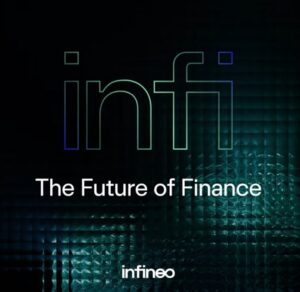
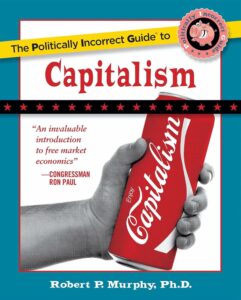
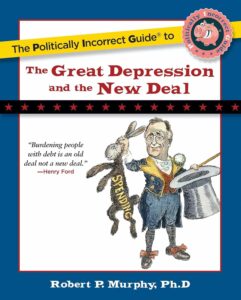
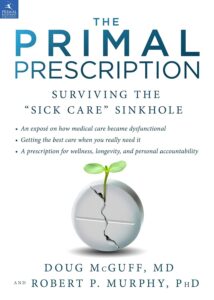


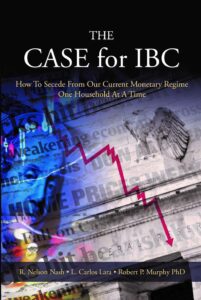
Recent Comments